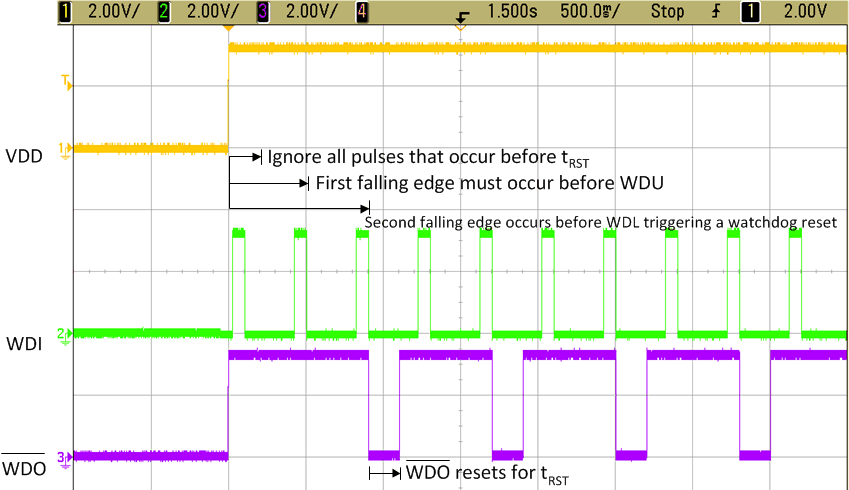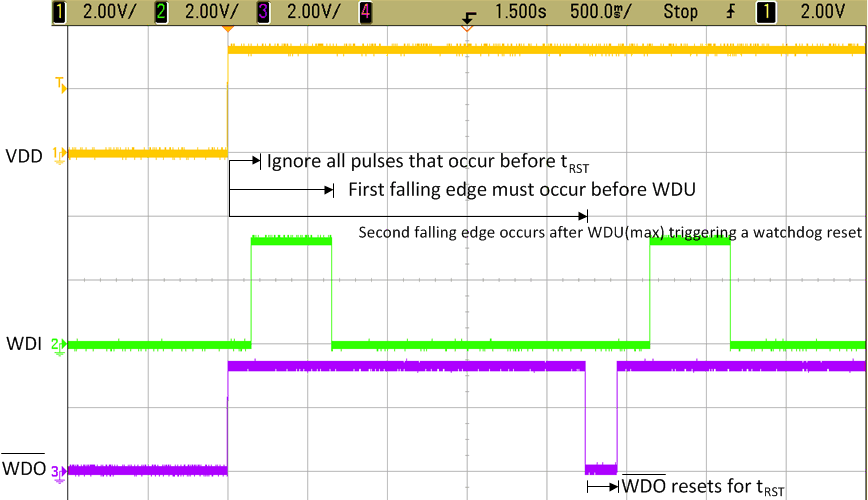ZHCSIK0A July 2018 – October 2021 TPS3430
PRODUCTION DATA
- 1 特性
- 2 应用
- 3 说明
- 4 Revision History
- 5 Pin Configuration and Functions
- 6 Specifications
- 7 Detailed Description
- 8 Application and Implementation
- 9 Power Supply Recommendations
- 10Layout
- 11Device and Documentation Support
- 12Mechanical, Packaging, and Orderable Information
8.2.1.2.2 Setting the Watchdog Window - Design 1
The Watchdog Window is set via the CWD, SET0, and SET1 pin configurations. To achieve a Watchdog Timeout of 1 second, this design simply leaves CWD pin floating (NC - No Connect) and ties SET0 and SET1 to VDD to set these SET pins to logic high. With this configuration, the Watchdog Lower Boundary tWDL (typ) is set for 800ms and the Watchdog Upper Boundary tWDU (typ) is set for 1.6 seconds. Refer to Table 6.6 Timing Requirements to see the factory-programmed window watchdog timing configurations.
In Figure 8-5 and Figure 8-6 below, the watchdog window timing is shown by causing watchdog faults from pulses on WDI arriving too early and too late, respectively. When a pulse on WDI arrives too early, that is before tWDL (min) or too late, that is after tWDU (max), a watchdog fault occurs and WDO activates to logic low.
 Figure 8-5 Watchdog Fault Caused by WDI Pulse Arriving Too Early (Before tWDL (min))
Figure 8-5 Watchdog Fault Caused by WDI Pulse Arriving Too Early (Before tWDL (min)) Figure 8-6 Watchdog Fault Caused by WDI Pulse Arriving Too Late (After tWDU (max))
Figure 8-6 Watchdog Fault Caused by WDI Pulse Arriving Too Late (After tWDU (max))